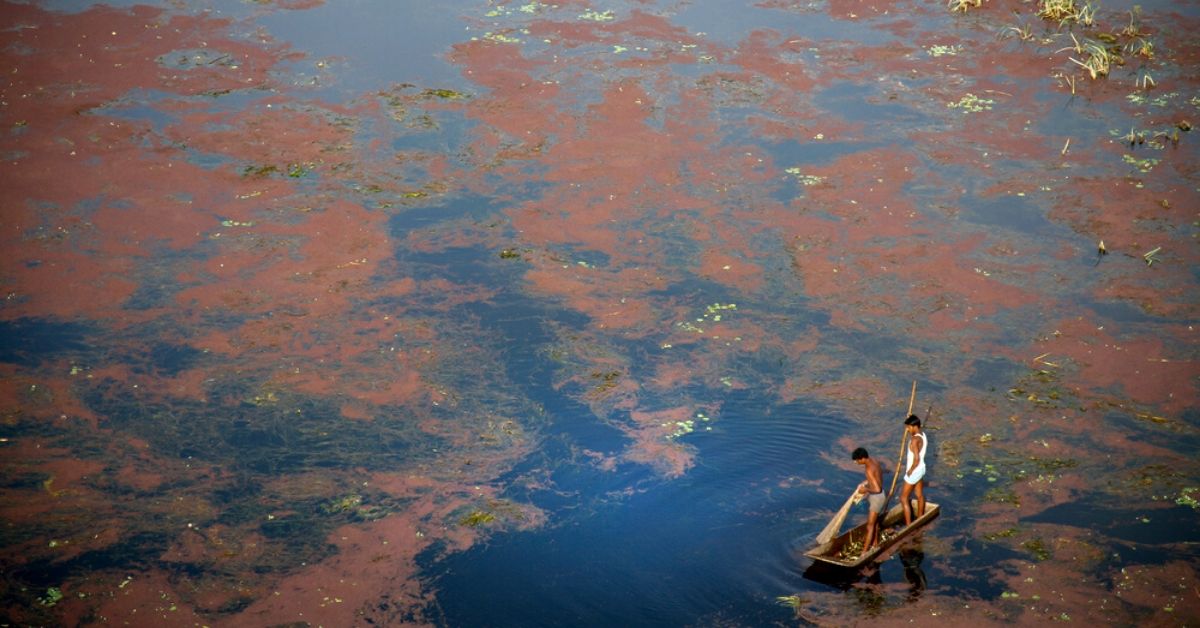Detergents Add 1.46 Lakh Tons of Phosphate to India’s Waters Yearly. This Has to Stop
When released in lakes and rivers (where our detergents end up any way), phosphates cause unnatural growth of algae, blocking sunlight, limiting oxygen supply and even foaming of lakes

We have become so familiar with certain commodities that we almost take them for granted.
Let’s take the example of detergents. Although seemingly harmless, they are likely to contain hazardous chemicals that keep affecting you long after the clothes are washed and dried.
“Once you put on your clothes, and are out and about, the chemicals slowly keep transferring onto your skin and pores. These chemicals have proven to cause all sorts of problems such as skin and eye irritation, allergic reactions, and even cancer in some cases,” Taniya Golder, a researcher at National Institute of Cholera and Enteric Diseases told The Better India (TBI).
Phosphate: the softener that is harsh on our lakes
Detergents contain Phosphate, an element which, when found in its natural state is beneficial to the environment but when artificially introduced, causes the over fertilisation of plants and is a significant reason why lakes around the country are dying a slow death.
A study by four researchers in Bengaluru called for a restriction on phosphate-based detergents showing evidence that the dumping of this element in our lakes and rivers is resulting in the abnormal growth of algae, which then forms a blanket on the lake surface and restricts sunlight and oxygen from entering.
“Primary nutrient, such as carbon, nitrogen, phosphorus, etc. contribute to eutrophication. In the freshwater ecosystem, primary producers can obtain N from the atmosphere, and hence phosphorus is the primary agent of eutrophication. Moreover, elements carbon, nitrogen and phosphorus can generate its weight by 12, 71 and 500 times, and hence phosphorous is the limiting element in primary producers. Nutrients enrichment often leads to excessive growth of invasive species (water hyacinth, etc.), which forms [a] thick mat hindering the sunlight penetration,” said the team.
The evidence is right here:
The frothing lakes of Bengaluru are quite infamous. Although the thousands of lakes, rivers and ponds across India haven’t suffered that fate, their water remains polluted due to domestic and industrial activities.
How much of that pollution is due to our cleaners?
About 2.88 million tonnes every year- that’s the estimate of how much phosphate-based detergents India uses.
“… and the total outflow of [Phosphorous] is estimated to be 146 thousand tonnes per year,” say TV Ramachandra and team.
We need to stop this right now, and the way to do it is being responsible with our choices of cleaners. Yes, one bottle will not make a huge difference, but it will set the right wheels in motion.
Step by step, person by person, we can change our cleaning habits to make our home and our ultimate home (the earth) a less toxic, cleaner place to live in.
Detergents made from plant-based enzymes are one way of doing that. When made using no acid or synthetic chemicals, this detergent leaves your clothes spotless. And it is so eco-friendly, that you can use it to water plants with the laundry water.
Convenient, right?
Click here to order your set of the home cleaners now.
Also Read: Finding It Hard To Breathe? These 3 VOCs In Your Cleaners Might Be The Reason
(Edited by Gayatri Mishra)
Like this story? Or have something to share? Write to us: [email protected], or connect with us on Facebook and Twitter.
If you found our stories insightful, informative, or even just enjoyable, we invite you to consider making a voluntary payment to support the work we do at The Better India. Your contribution helps us continue producing quality content that educates, inspires, and drives positive change.
Choose one of the payment options below for your contribution-
By paying for the stories you value, you directly contribute to sustaining our efforts focused on making a difference in the world. Together, let's ensure that impactful stories continue to be told and shared, enriching lives and communities alike.
Thank you for your support. Here are some frequently asked questions you might find helpful to know why you are contributing?


This story made me
-
97
-
121
-
89
-
167















